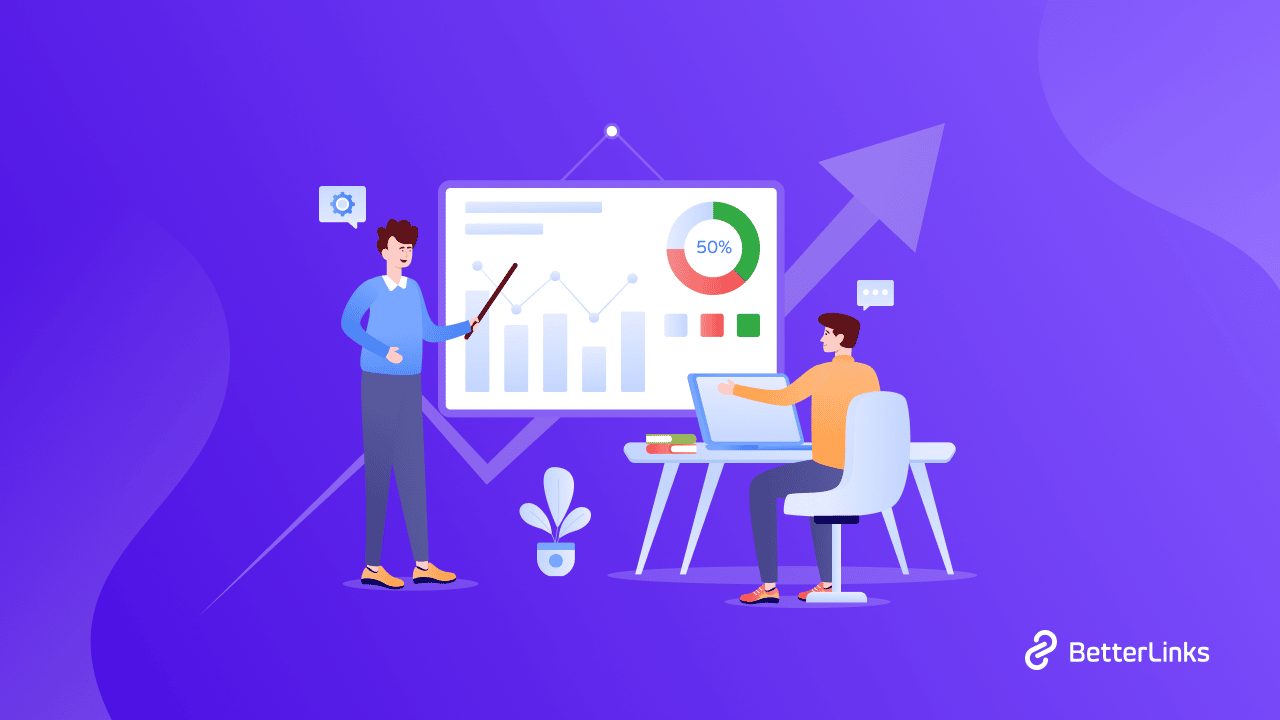Digital marketing trends around the world are evolving drastically with time, and so are their performance indicators and ROI metrics. These changes in digital marketing happened beyond imagination over the past few years, especially witnessing significant shifts after COVID-19. If you want to ensure the growth of your business given that scenario, it is important to track the key digital marketing ROI metrics thoroughly and insightfully. And with this blog, we will walk you through everything that you need to know about for the best results.

Things To Consider Before Tracking The Digital Marketing ROI Metrics
The first question that may arise is ‘which digital marketing ROI metrics you should keep track of‘ as there are many. However, you will be relieved to know that there are only a handful of ROI metrics that are essential to your business and its growth.
To find out which ROI indicators are most important for your company, you need to consider some common scenarios and ask yourself few related questions:

✅ It is important to find out how a particular metric impacts your business – positively or negatively. For example, if your website traffic changes, will this have a huge impact on your business? Without a doubt, the answer is ‘yes’. So, in most cases, website traffic is going to be an important metric to monitor.
✅ Another important thing to consider is if you work to improve a specific ROI metric, is your company going to be closer to meeting its business targets? For example, if you monitor the bounce rate carefully and make changes, is it going to increase conversion rates on your website? If so, then this ROI metric is a crucial one for your business.
✅ You must take into account interconnected metrics as well and find out whether one enhances or has a detrimental effect on the others. If you notice changes in one metric due to an improvement of another, then you must consider that particular metric and keep track.
Now that you know how to determine the required ROI metrics, it’s time to know the 10+ most important digital marketing ROI metrics that you must know and track.
10+ Digital Marketing ROI Metrics You Must Know & Inspect
Monitoring the various ROI indicators will not only help you avoid failures but will also enable you to grow your company to the pinnacle of success. So, let’s dive in to learn about digital marketing ROI metrics in depth.
1. Traffic Generated By Different Channels

To inspect the overall performance & revenue of your business, you need to monitor which particular channels are well-performing, bringing in more conversions, and are cost-effective. For marketers, it is important to know which channel the traffic is flowing from.
The number of leads generated by a particular marketing channel is divided by the total number of visits to calculate traffic generated by channels. Whether it comes from organic, paid, social media, or other channels, this data reveals where the majority of our customers are as well as/or where marketing initiatives are creating the most buzz.
With Google Analytics you can track what channels bring the most traffic to your business websites. Afterward, you can compare two or more channels, and evaluate the performance of your SEO efforts for each. You can also use BetterLinks which is an advanced WordPress link management tool that allows you to integrate with Google Analytics and measure traffic generated by specific channels.
2. Conversion Rate
Conversion Rate refers to the percentage of visitors who convert. The conversion might be through making a purchase, signing up for an email list, or something else – anything that helps you reach a goal and convert a website visitor into a customer. Therefore, the conversion rate can be seen as a goal completion rate, which is measured by dividing the number of conversions by the total number of visitors.

You may learn more about the success of your landing page by looking at its conversion rate – the number of clicks, purchases, average time spent, etc. It may also represent the proportion of site visitors who make a purchase and eventually become paying customers of your company. Any business should research how much traffic is converting and generating revenue.
Your chances of having a favorable ROI are increased by having more conversions. Google Analytics is an excellent tool that allows you to track conversion rates as well.

3. Cost Per Acquisition
How much it costs you to bring in a new customer is your cost per acquisition (or, Customer Acquisition Cost, CAC). Divide your marketing expenses for a time period or campaign by the total number of sales you generated (or customer acquired) during that time period or campaign to get at this digital marketing metric.

4. Customer Lifetime Value
Customer lifetime value (CLV) quantifies the value of a customer to your company over the course of their connection with you. It is helpful for determining the long-term return on investment of your marketing. To get CLV, multiply the average annual income per client by the average number of years they remain as a customer of your company. From the calculation, you can then find out the cost of acquiring a single customer.

Source: Propeller
The formula to calculate Customer Lifetime Value is going to be like the following:
CLV= (average annual revenue from a single customer x average number of years as a customer) – customer acquisition cost
5. Return On Ad Spend
Assessing your advertising and paid campaigns’ performance through return on ad spend measurement is helpful. This is crucial when analyzing performance, comparing channel expenditures, and making future projections. You should monitor the return on ad spend (ROAS) if you plan to use social media advertising. The ads manager on most social advertising networks will have this metric available.

6. Average Order Value
Measuring AOV or Average Order Value is helpful for online retailers or eCommerce store owners. AOV counts the average amount of money spent each time a customer places an order or purchases a product from your company.

It’s an essential metric when it comes to determining marketing effectiveness and directly relates to the total amount of profit that your site is making from its users. You need to divide total revenue by the number of orders to find out your company’s AOV.

7. Customer Retention Rate
The percentage of existing customers after a certain period is referred to as the Customer Retention Rate. It is an important ROI metric to understand what makes your customers stay with your company. The following numbers are used to calculate CRR or Customer Retention Rate.
Customers at the start of a given period (S)
Customers at the end of that period (E)
New customers acquired during that period ( (N)
Customer Retention Rate = ((E – N) / S) x 100
8. Bounce Rate
Bounce rate, as used in digital marketing, refers to when a visitor leaves your website after just reading one page. The bounce rate of your website is triggered when users arrive on your site but leave without taking any action.

You will have to divide single-page sessions by the total number of sessions to get the bounce rate. This means, your bounce rate will be 10% if 100 people come to your website and 10 of them leave without viewing any additional pages.
You can conduct A/B split testing to find out what is working well for you and what’s not. You need to find out first why your website has a high bounce rate on a specific page. You can then try changing the layout of the pages, navigation menus, Call-To-action buttons, etc, and evaluate the result.
This will help you understand why the page should have a high bounce rate and make it simple for you to find the answer. BetterLinks’ powerful A/B split test feature makes it simple to compare various marketing efforts and determine which ones perform better.
9. Total Monthly Visitors

Tracking total monthly visitors is useful to understand your website’s engagement and access the actual reach of your website. This metric reveals the number of monthly visitors to your website. Without knowing this, you cannot determine whether or not this traffic is significant. Therefore it’s essential to monitor the number of users visiting your site. Using analytics is a smart way to collect information for ROI.
BetterLinks allows you to track and measure your click-through rate as well as other details such as the name of the link, the referrer, the target URLs, and many other things. To monitor how many visits a certain link receives throughout particular seasons or times of the year, you can even filter the data gathered according to date and time.
10. Keyword Average Ranking
Keyword average ranking is another digital marketing ROI metric to understand which of the keyword your website is ranking for. The position of your page in search results pages for a particular searched word is known as keyword average ranking. Your URL’s position when a user types a particular search term related to the content of your page is determined by your keyword ranking. You can track your ranks for particular keywords and get the performance report using Google Search Console.
11. Cost Per Lead
Cost Per Lead is an essential digital marketing ROI metric that you need to inspect when you are running marketing campaigns. To minimize the cost of getting new leads, you need to monitor is metric. The expense you need to spend for obtaining new leads is defined as CPL. Cost Per Lead is a crucial digital marketing ROI metric and an indicator of a company’s lead generation effort. It is often segmented by each unique social media, email marketing, or ad campaign.

Efficiently Track The Digital Marketing ROI Metrics To Grow Your Business
The ROI metrics described above are essential among the many digital marketing ROI metrics used to monitor and comprehend the success of your business performance. Any store that wants to be successful should concentrate on them. Your business will run at its peak performance if you analyze these key ROI indicators and take initiatives accordingly.
Hopefully, this digital marketing ROI metrics list was helpful for you. If you tried implementing & improving any of the metrics, share your experience with us. To get more insights into digital marketing, subscribe to our blog. You can also join our friendly Facebook community to know about our latest updates.








